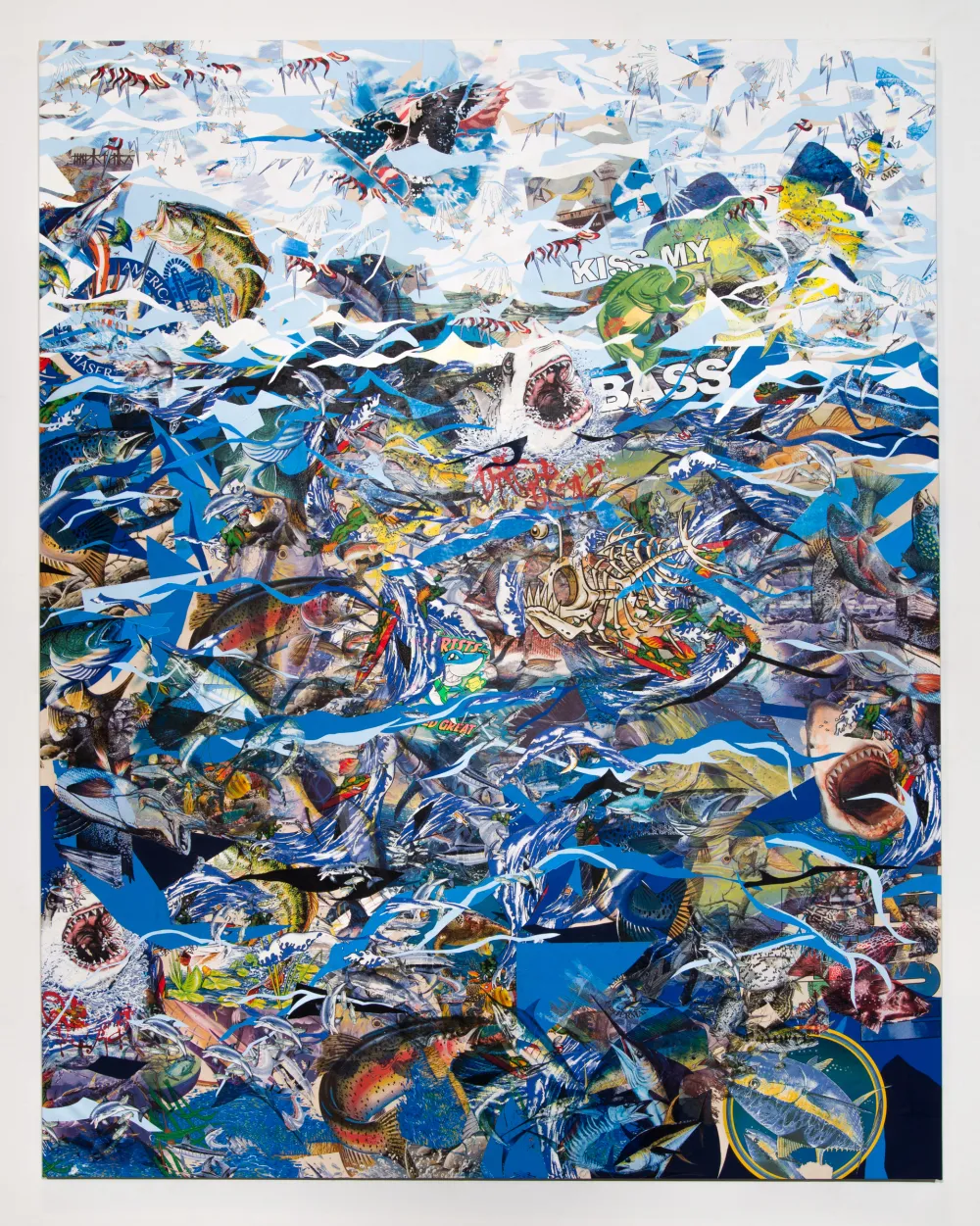
- Source: ARTFORUM
- Author: David Rimanelli
- Date: JUNE 15, 2018
- Format: PRINT AND DIGITAL
CRITICS’ PICKS NEW YORK
Borna Sammak
JTT
April 29, 2018 – June 17, 2018

Borna Sammak, Not Yet Titled, 2015, heat-applied T-shirt graphics and vinyl on canvas, 70 x 60".
Those sectional sofas from a timeless 1970s—meaning you can buy one now at Roche Bobois—that suburban feeling, with a hint of swingers (cinematically, more L.I.E. than The Ice Storm key parties, but still: from the ’70s). Or from the Middle Ages, from the Baroque. In my own memory: a seemingly vast serpentine mountain range upholstered in gray velvet, a barrier reef in the seldom-used living room of the house I grew up in. Mystery and fantasy, science fiction and the hint of as-yet-undiscovered porn: One Million Years BC meets Escape from the Planet of the Apes. So yeah, Borna Sammak’s Not Yet Titled (Couch), 2018, comes by me elaborately and intimately titled.
Near this gargantuan madeleine hangs Frame for a Poster, 2018, a shrine-like portrait of the legendary Jesús Malverde, a Mexican “narco-saint” revered by the country’s drug cartels. A bit of Koons perfumes the air—its confectionary roses in acid pastels bloom and congeal around a sullen Malverde, who is flanked by La Virgen de Guadalupe and a stone cross—perhaps the saint’s headstone. It’s not certain that Malverde, a figure of hope who stole from the rich under the oppressive regime of President Porfirio Díaz, was ever real. But generous fictions like him are a balm, especially now, and an excellent source of inspiration for one’s own sense of vengeance.
The canvas Not Yet Titled, 2015, seems in its frantic repetition of sea creatures to echo the snaking movements of the couch sculpture. The phrase “KISS MY BASS” shows up in the work—a vituperative hillbilly declaration you’d likely see emblazoned on a cap worn by a certain strain of “patriotic” American. Sammak is not the only artist who dives so zealously into pop culture’s fathomless pit of trash. But he does so with a sharp sense of humor and an even sharper sense of cruelty.

